CONTINGENT WORKFORCES
Are mismanaged teams a risk to your business?
TALINT TALK

An important lesson for TA

Are mismanaged teams a risk to your business?

An important lesson for TA
ITS IMPACT ON THE FUTURE OF TALENT ACQUISITION



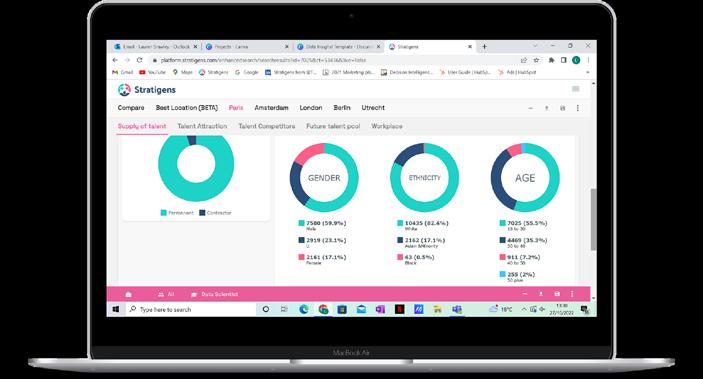

I remember the first time I saw my name in print like it was yesterday. Just after I arrived in London with a suitcase bigger than me and a mere £500 to my name, I landed my first job at [then] Her Majesty’s Stationery Office where, as the Editorial Assistant, I sent faxes and made coffee for a year. I also learned how to use email and one of my jobs was to collect data and facts to be included in the 2001 edition of Whitaker’s Almanac. The day of our printing deadline, on September 11th 2001, the world was changed forever when planes flew into the Twin Towers. As one of the highest buildings in London (no longer as the Cityscape of the Big Smoke has changed so since), we were evacuated immediately and sent home. I remember this day clearly as we had to delay the printing of the Almanac because of out-of-date data on the tallest building in the world. The Editor literally picked up a landline and shouted: “Stop the press!” so we could amend it on the proof sheets.
That edition of the Whitaker’s Almanac was the first book ever that had my name printed on the masthead – to this day one of my proudest career moments. I’m not sure I remember it because it was my first – they say you never forget your first – or because of what happened around the time of printing. Either way, I think it’s a good story and one I’ve told my kids a few times. I still have that book on my shelf.
There has been lots of change since those early days of my career. The advancement of digital publishing and online marketing has been lightning fast. We tell our audience every month that if you don’t embrace technological advancements, you risk your organisation being left behind. And with that in mind, I’d like to share some really exciting news with you. We have made the strategic decision to combine the readership of TALiNT International magazine with that of TALiNT International
Debbie Walton Editor, TALiNT Partners

TALiNT Partners brings together a global network of leading employers and solution providers to make better talent and technology decisions by providing intelligence, insight and peer-to-peer networking that drives quality, innovation and improves inclusion across the talent ecosystem.

website onto one digital platform. We believe that this decision is going to benefit our sponsors and readers immensely as it will not only increase reach, readership and engagement but will continue to position TALiNT International as the go-to resource for insights and thought leadership from across the talent eco-system.
In this final issue we will be showcasing the finalists of the TIARA Talent Solutions Awards and Talent Acquisition Awards. The TIARAs continue to set the standard of excellence in the industry and with collectively over 50 finalists, the TIARA programme really does showcase the best of the best. See who’s made it to the finals from page 20.
Who isn’t talking about AI? You’ll be hard pressed to find a colleague, friend or acquaintance who hasn’t used it or isn’t using it every day. With all the hype and apprehension, we thought it was a topic we should write about in terms of how it’s going to affect the wider talent industry. We reached out to our network of talent leaders and had the most overwhelming response! Read about their opinions on page 10.
This will therefore be the last issue of TALiNT International! It’s been an incredible, but I am so excited for the evolution!












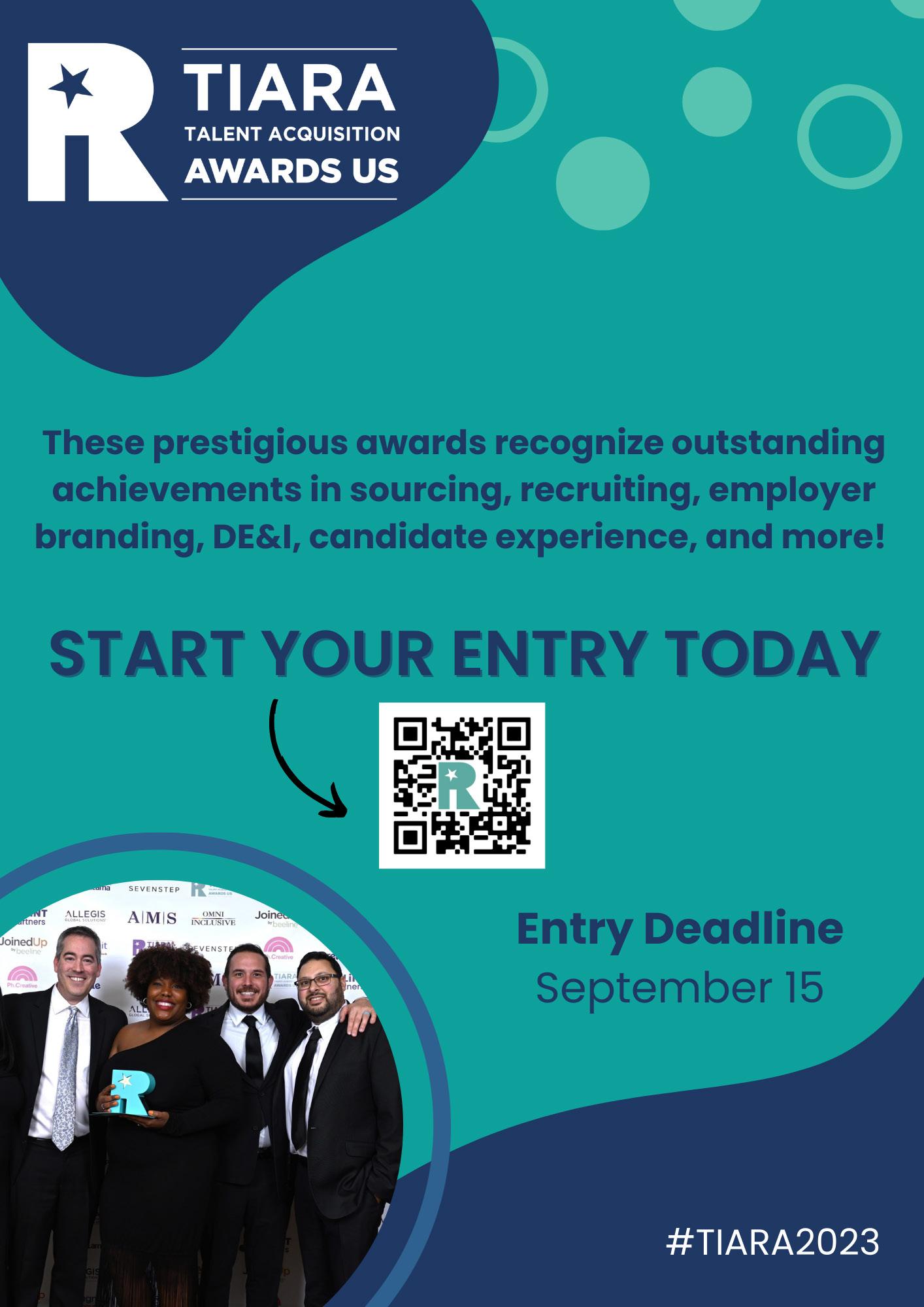
29 June
Hotel Gotham, Manchester
This was a private dinner for TA/HR Leaders across the North. In partnership with Guidant Global, delegates discussed DE&I in the contingent workforce. Contrary to what you may believe based on the name of the venue, Batman, nor the Joker were spotted.
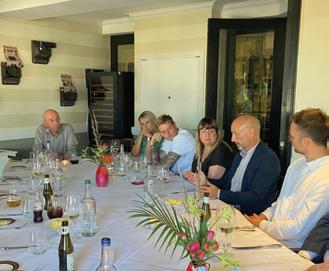


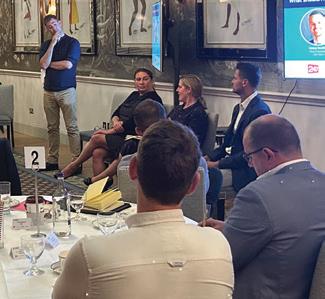
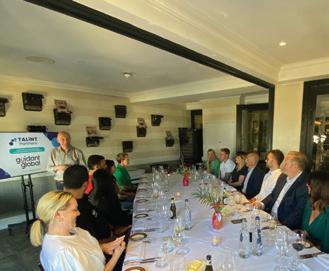
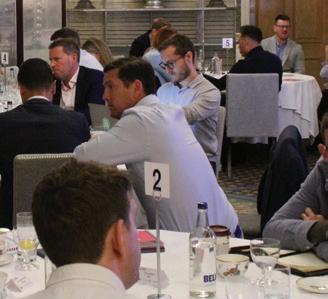
06 July
Haymarket Hotel, London
Against a backdrop of rising interest rates and more cautious lenders & investors, how can recruiters of all sizes maximise tech, funding, talent & insight for more profitable growth?
TALiNT Partners brought together the perfect panel of partner experts & industry thought leaders to answer this and other questions that recruitment leaders should be asking as we head into H2.
TALiNT Partners has had a very successful run of great lunches in dinners where they’ve brought together industry leaders from across the talent ecosystem to talk shop. As the wheels slow down as we approach the summer holidays (what summer?), it’s been great to reflect on the first half of the year and talk about what’s to come!

12 July
Lotos Room, Beaumont Hotel, London
We brought together 25 Talent Acquisition leaders from across a variety of sectors including oil and gas, entertainment and tech. Regardless of the industry, one common thread was that all TA leaders are faced with the same challenges: tech, scarce talent and workforce planning. It’s refreshing to know you’re not alone!

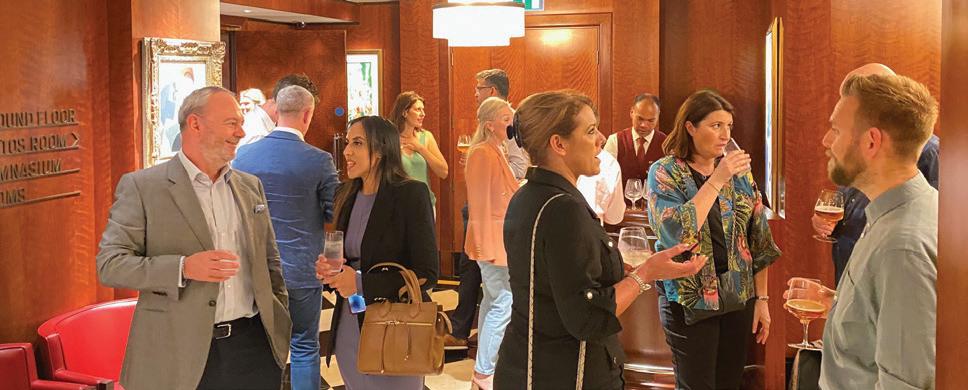
An overwhelming 80% of office workers express their belief in the potential of a four-day workweek to bolster productivity, as highlighted by a report released on August 7th from ResumeBuilder.com. The study, based on a survey of 1,000 full-time office employees without existing four-day work weeks, underscores the strong appetite for this new work arrangement.

Among those surveyed, an impressive 94% reveal their openness to transitioning to a four-day work week, with 57% of them indicating substantial enthusiasm for the idea. Respondents emphasize the positive impacts of this change, citing improved work-life balance (96%) and increased productivity (88%) as key benefits.
The study also delves into the willingness of office workers to make concessions for this shift. Remarkably, 77% of respondents express their likelihood to consider changing jobs if offered the option of a condensed work week. Furthermore, 33% are open to taking a reduction in pay, even while maintaining their current job responsibilities.
Despite the positive reception, a minority –about 6% – express reservations about adopting a four-day workweek. Their reluctance stems from concerns about the prospect of longer workdays required to accommodate the

condensed schedule. Many of them indicate a preference for distributing their workload over a more extended timeframe rather than compacting it into fewer days.
The transition to a four-day workweek, while presenting challenges such as renegotiating employment contracts and addressing holiday pay, is touted as a worthwhile endeavor. Companies that have made the leap affirm its advantages: a boost in employee happiness, increased operational efficiency, and improved retention and recruitment rates.
In a revealing development, approximately 47% of workers are prepared to resign from their current positions or initiate a job search if confronted with a compulsory full-time returnto-office policy, as per a report from the Integrated Benefits Institute published on August 3rd. This non-profit organization, focused on health and productivity research, highlights the shifting dynamics of workplace preferences.
While many employers are currently maintaining flexible work arrangements, some have begun implementing either full-time or part-time return-to-office mandates, revealing a divergence in organizational strategies. The report underscores the pronounced influence of flexibility on employee well-being, engagement, and commitment. Carole Bonner, a researcher at the Integrated Benefits Institute, emphasizes that offering adaptable work schedules can mitigate burnout risks and amplify employee productivity. Companies that prioritize flexibility tend to observe improved attraction, retention rates, and the influx of top talent.
The report sheds light on the landscape of flexible work arrangements, with around 85% of employers already providing or planning to offer some form of flexibility, ranging from full remote to hybrid models. Paradoxically, while only 15% of remote-capable employees express a desire to return to the office, 22.5% of employers with remote-capable staff are eager to have their employees back on-site full-time. This discrepancy stems from various considerations, including concerns about productivity, the usage of vacant office spaces, workforce creativity, and community.
The study delves into employee subjective wellbeing, unveiling that hybrid work arrangements have the most positive impact. Employees adhering to full-time on-site schedules exhibit lower levels of happiness, while those participating in office-first models with one or two days of remote work showcase the highest well-being ratings.
To address these nuances across various work arrangements, the Integrated Benefits Institute recommends fostering engagement and community-building through virtual means, such as online social events, mentorship programs, and wellness activities.

Maintaining flexible work options is crucial for retention, as indicated by a recent report wherein 50% of workers admitted considering job changes if their companies eliminate hybrid or remote possibilities. Job satisfaction and productivity are predicted to wane significantly. This trend is echoed in another survey focused on talent acquisition, revealing that candidates prioritize remote work, higher compensation, and improved work-life equilibrium.
Despite the evolving landscape, the labor market is witnessing a notable proportion of workers opting to remain in their current roles. This shift can be attributed to a newfound emphasis on stability, community, and a supportive organizational culture, according to leaders in talent acquisition.


The same thing is happening now that generative AI has become mainstream. It’s been around for years, but we’ve never used it in our daily work and personal lives as much as we are now and its obviously sparking debate.
Generative AI systems like Chat GPT have made remarkable advancements, capturing the attention of both the media and the public. While these systems bring numerous benefits, like increased efficiency and innovation, they also give rise to concerns and challenges. There are a few reasons behind the negative press surrounding generative AI and emphasises the importance of responsible development, transparency, and a focus on human-centric AI to harness its potential. By addressing the major concerns like job displacement, data privacy and ethics issues we can foster a more balanced and informed dialogue about the future of AI.
With the automation of routine tasks increasingly driven by AI technology, employment landscapes will experience inevitable changes and job displacement – but it doesn’t have to be doom and gloom. This transition demands a renewed focus on skills that cannot be easily replaced by machines, such as creativity, problem-solving, and critical thinking. While AI promises to create new opportunities, many people may feel apprehensive about their employment and future prospects.
When we reached out to our wider audience for comment on why Talent Leaders believe AI is ge�ng the negative press, the consensus is that there are two main factors fuelling the negative fire around AI: Fear of the unknown and the media.

Marcelle Foxcro�, Global Head of TA at Trustpilot made a valid point around fear
masking its potential benefits: “Anything that is ungoverned and unregulated, makes people nervous. If we think back to the launch of Bitcoin, the majority of the articles were around the use of Bitcoin for organised crime. Few people focussed on the blockchain technology that sat behind it and how innovative the technology was.”
While negative narratives can often surround generative AI, it is important to approach this technology with a balanced perspective and to not fall for the ‘click baity’ media headlines that promote sensationalism and fear. David Annable, CEO and Founder at specialist recruitment company, Franklin Fitch believes that these kinds of headlines only exacerbate the fear of losing your job to a robot and that this fear seems to grow more real than even the science fiction movies that initially depicted the scenario.
When the world wide web arrived way back in 1991, it was met with op�mism and pessimism in equal measure and although it was touted as a universally linked informa�on system, adop�on apprehension was high.

Adopting a strategic workforce planning approach becomes essential, focussing on proactive measures to harness AI’s potential positively. While workforce planning seems an impossible task to TA leaders, the use of Talent Intelligence (market data plus gossip!) can support effective workforce planning and could potentially tell you what skills in future, and where to find them. Therefore, mitigating job loss thanks to AI because you’re able to forward plan.
Again, our audience shared that strategies like upskilling and reskilling should be implemented to mitigate any possible negative affects AI will have the job market.
This involves implementing training programmes, workshops, and resources to foster a culture of continuous learning and adaptability.
Promoting a culture of continuous learning is vital for workforce development and offering upskilling programmes focussed on soft skills helps individuals transition into new roles and fosters adaptability and innovation.
Alex Fourlis, President at Broadbean said, “AI won’t replace your job, but someone who knows how to use AI might…
“More and more we will see companies requiring AI proficiency in their job descriptions, as AI technology becomes as standard in workplace processes as the internet. Organisations shouldn’t shy away from AI but should instead seek to embrace AI tools and technologies that can empower their workers to be more efficient and effective. This includes educating their employees on how to get the most impact of their AI tech stack.”
There isn’t a conversation about AI that doesn’t touch on the notion that AI should be used to automate menial admin tasks to free up time for recruiters and TA leaders to do what they do best: foster relationships. The emphasis on human skills remains as AI can automate tasks, but it can’t replicate essential human qualities like creativity, emotional intelligence, and problem-solving. Encouraging and promoting these unique skills allows employees to complement AI systems effectively.

By pu�ng employees at the centre of AI implementation it creates a people-centric approach. Understanding how AI can improve employee fulfilment and supporting them in adapting to new roles. As such, the integration of AI should be seen as an opportunity to relieve employees from mundane tasks, allowing them to focus on more strategic and impactful aspects of their roles. Travis Kessel, Vice President Talent Acquisi�on at Disney
elaborated on this sentiment. “Similar to other implementations in technology, while this may automate more manual or tactical aspects of a business, it will free others up to focus on more strategic priorities or directly dealing with human interactions. Relationships drive business and the irreplaceable human element that is required for this will not go away.”
“AI as a tool can give us more time to focus on the high-value tasks that require the empathy,
problem-solving and nuance that only humans can provide,” commented Lindsey Zuloaga, Chief Data Scien�st at HireVue.
Jason Heilman, SVP Product – Automa�on and AI at Bullhorn agrees. “When deployed thoughtfully, AI-powered tools will be an enabler of success to those who leverage them — not a replacement for employees. It can empower your junior employees to work more like senior staff, and senior employees to work faster.”
Rather than fearing AI, organisations should embrace it as an empowering tool for their workforce. Educating employees on effective AI utilisation enhances efficiency while retaining human involvement in decision-making.

Major players like Microsoft, Google, and Facebook are investing heavily in its development. However, it is crucial that the benefits of AI technology are distributed fairly across society, and that potential negative social impacts are minimised. There should be policies and strategies that can help achieve this and foster a less frightening AI-driven future.
According to the head of HR at one of the UK’s leading car manufacturers, the responsibility of the safe and ethical use of AI will fall to HR teams.

They said, “AI ethics is probably something that the HR function is going to need to understand in greater depth, along with a greater understanding of what machine learning and statistical inference actually is, so it can be deployed in a considered way to add value for employees and customers.”

One pressing concern is discrimination. For example, the fear that older workers may be overlooked or face barriers when adapting to more tech-centric roles, further exacerbating existing inequalities. Additionally, access to quality education remains unequal, particularly affecting poorer communities. A shortage of skilled workers in STEM fields, worsened by the pandemic and Brexit, has further deepened this divide, leaving many workers behind in the re-skilling process.
Ed Holroyd Pearce, President and Co-founder of Virtual Internships believes that while big corporates have a role to play in the equitable distribution of AI, so do governments and regulators. “Ensuring that technology benefits a wide geographic area and broad sociodemographic backgrounds is going to be something corporates will want to showcase and prove. Equally, passing on cost savings to the customers that need it most will be in focus for some.”
The positive news is that diversity and inclusion (ED&I) and environmental, social, and governance (ESG) considerations have gained prominence in corporate agendas. Could emphasising these principles in AI strategies lead to more inclusive organisations and reduce negative social impacts? Perhaps, but how?
To prepare the workers of tomorrow, AI education should be integrated into the curriculum and embraced as a positive tool. Promoting the use of AI and its benefits can elevate opportunities for everyone, regardless of their background.
As AI’s impact transcends borders, a global approach to regulation and cooperation between tech giants and government leaders is vital. Ma� Comber, CEO at SourceFlow feels we all have a moral obligation to regulate AI use. “We need to look at industry-wide charters and agreements to decide how we will use AI and ethical practices. There is, in truth, not a lot we can do from a policy point of view to stop bad actors when it comes to AI, we instead need to look at ourselves and decide on human and moral policies in terms of our use of it.
Knowing the role changes that AI will bring it is cri�cal to create opportuni�es for our exis�ng colleagues to move or reskill. We have already developed internal Academies where colleagues can learn new skills in tech or finance, among others and are crea�ng a new pla�orm where internal colleagues can display their skills, and poten�ally could be sourced by recruiters for new posi�ons.
I believe it is absolutely essen�al that the tech giants get together with leaders of governments around the world.
The leaders need to understand how to shape new laws and prepare sectors such as educa�on in how to adapt to the changes. Tech giants need to sort out how to protect people from misleading and untruthful informa�on as well as protec�ng children, who are increasingly exposed to online content (good and bad).
Individuals who lack the opportunity to reskill within their current business can explore alterna�ve career paths by iden�fying industries or func�ons that face substan�al shortages presently

and are projected to experience such shortages in the future, as indicated by the skills priority list. Pursuing a transi�on into one of these areas, if feasible, can provide enhanced job security.
Nicole Hart, Marke�ng Manager at Fuse Recruitment
A platform specifically developed by staffing organizations, for staffing organizations, to manage programs, gain critical visibility and deliver talents in the fastest fashion.

Set up your clients and their process by your own on the platform and start working with them right away.
RAPID IMPLEMENTATION

Implementation time is 4 to 6 weeks, with no charge for implementation. Contact us on www.pixid-vms.com
CLIENT SERVICE
Laser-sharp focus on the Staffing Industry. Our Team Members have spent over dozen years serving Staffing Clients.
Why choose PIXID VMS? PIXID Group is the European leader in smart technologies dedicated to staffing, recruitment and temp work


In September 2021, the New York Times reported that US-based technology company could be liable for more than $100 million for underpayment of temporary workers. The sum includes back salaries for over nine years of noncompliance with pay parity laws in 16 countries covering agency-provided temporary workers. Not only did the whistleblower complaint allege worker underpayment. It also accused the company of securi�es viola�ons because it had failed to disclose the risk to investors.
Contributed by BeelineIn a separate 2023 ruling, the US National Labor Relations Board ruled that the same company is a “joint employer” of contract workers hired via a staffing firm. As a result, it is obligated to negotiate with the workers if they unionize. The company relies heavily on staffing firms to meet its labor needs. Now it faces the prospect of collectively bargaining with US workers for the first time in its history.
In the UK, a personal service company (PSC) contractor recently lost a four-year battle with His Majesty’s Revenue and Customs (HMRC), the government’s tax, payments, and customs authority, over unpaid taxes and national insurance contributions (NIC) associated with services performed for a large multinational financial services provider. Under terms of the UK’s IR35 anti-tax-avoidance legislation, the contractor and his employer were found liable for £141,000 in unpaid taxes, NICs, and penalties.
Aggressive enforcement of off-payroll working rules is further illustrated by a recent case in which HMRC recovered more than £260,000 in unpaid tax and NIC from a company who supplied workers to the healthcare sector. The First Tier Tribunal (FTT) determined that the staffing supplier’s contracts were with individuals, not PSCs. It ruled the workers must be treated as employees.
These examples represent just a few ways contingent workforce program owners put their companies at risk by mismanaging their relationships with non-employee workers. At a minimum, misclassification and other mishandling of external labor can lead to inefficiency, cost overruns, and loss of physical or intellectual property. At worst, they can lead to litigation, fines, and payment of statutory remittances and employee entitlements, all accompanied by adverse publicity and reputational damage.
In the US, a vast network of rules touching contingent labor are set forth in various bodies of law. These included the Internal Revenue Code, the Employee Retirement Income Security Act of 1974, the National Labor Relations Act, the Civil Rights Act, and the Fair Labor Standards Act. Even the Affordable Care Act of 2010 establishes rules for payment of benefits to contingent workers. There are also a multitude of state and local laws that affect and regulate these workers.
Other countries have similar, but different, tax and labor laws and regulations. The maze of national, regional, and local standards only complicates compliance efforts, especially for multinational companies.
On February 2, 2023, the European Parliament voted that many self-employed contractors and gig workers will be treated as employees unless they are engaged on very clear business-tobusiness terms such as being paid a fixed price for defined deliverables.

This directive will force many staffing companies, digital platforms, and employers of record (AOR)/ agents of record (EOR) to change the way they operate in Europe. Users of self-employed contractors and consultants will also have to adjust. While the new regulation only applies to EU countries, the UK has indicated that it may attempt to replicate this directive.
These examples illustrate that one of the most common problems in the management of an extended workforce is worker misclassification. This happens when a business incorrectly identifies the relationship that exists between their organization and a contingent worker. Since businesses typically rely on a mix of agency workers, independent contractors/ personal service company contractors, freelancers, consultants, and outsourced service providers, the risk of misclassifying some of this non-employee talent is always present. But because it is so

common, and the consequences can be so severe, companies need to make every possible effort to prevent misclassification of their contingent workers.
Risk reduction starts with a commitment to integrated workforce planning across the organization. Business must match workers with the right skills and the right contract to each role or assignment. This will require:
• shifting to skill-based, rather than role-based, workforce planning
• establishing the necessary policies and processes to execute an effective total talent acquisition program
• implementing appropriate technologies to make these programs and operate efficiently and compliantly

Regulatory compliance failure is a primary risk in mismanaged contingent workforce programs, but risk can manifest itself other ways. These can include:
• health and safety risks
• security risks
• lack of operational governance
• failure to comply with company policies and procedures
Another major concern is overspend on contingent labor. This can occur for many reasons including:
• unclear definition of scope
• inappropriate skill leveling
• failure to follow established rate cards
• lack of competitive bidding
• contingent labor category and assignment mismatch
• inadequate partner/supplier selection
Fortunately, there is a way to miti gate conti ngent workforce risks. Not only will it reduce legal and regulatory risks. It also can reduce overspend – typically by 15-20% or more. It will also accelerate ti me to value

– the interval between identi fying a criti cal need and having the right resources in place to fi ll it.
The transformation can be daunting. But the result will not only reduce your compliance risks. It will give you a more agile, more resilient workforce that delivers a sustainable competitive advantage.
To succeed, you need a system that will give you total workforce visibility. And you need it now.
We know because we’ve done it. We’ve helped hundreds of businesses implement the necessary technologies to manage their extended workforce. The results have been lower costs, increased efficiency, and reduced risk. And it all starts by giving you complete visibility of your workforce in real time –employees and non-employees alike.
To learn more about how total workforce visibility can protect your company from compliance risk, click here.
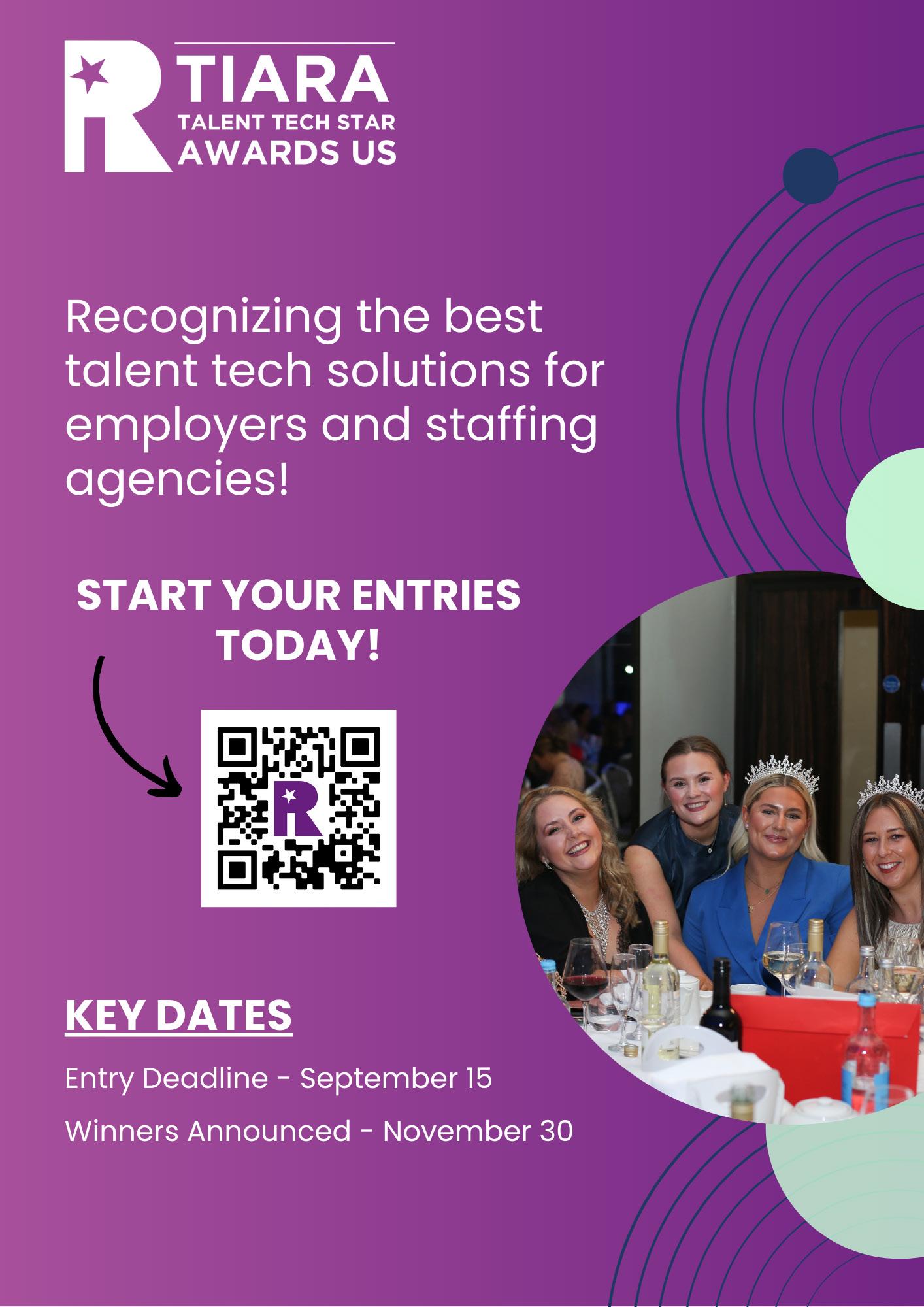
A recent situa�on in the UK caught the headlines when the CEO of a major bank, NatWest, resigned having admi�ed to being the source of a BBC story about a high-profile customer. The customer in ques�on, Nigel Farrage is a ‘Trumpian style’ poli�cian who, unsurprisingly, splits public opinion.

because a committee didn’t like his political views so, in the name of ‘inclusion’ they excluded him.
Even to those of us who are not fans of Mr Farage, this seems profoundly wrong and the whole farrago will soon be a business school case study on how to get ‘inclusion and purpose’ spectacularly wrong. And this will be a good thing because lessons can be learnt.
More widely, it’s a safe assumption that the 60,000 employees of the bank will not



currently be feeling as proud of who they work for as they were before this sorry episode. Likewise, the repercussions for the Talent Acquisition team trying to attract talent into the bank will reverberate for some time to come.
There are so many examples of over-reach in the name of inclusion and the seemingly endless expansions of employers’ definition of ‘purpose’. A top 10 shareholder of Unilever, a $70b global consumer business, claimed management have ‘lost the plot’ and that they ‘prize displaying its sustainability credentials at the expense of running the business’. This criticism does not just apply to Unilever but a myriad of other commercial organizations and increasingly, current and future employees just won’t buy it, never mind shareholders.
That’s not to say that employers should go back to the ‘greed is good’ philosophy of the 1980s, but rather that a mature, practical and (crucially) relevant articulation of purpose is what’s needed. This is achievable.

Our TIARA awards program introduced an ESG category for our Talent Solutions campaign a couple of years ago and some of the entries have been utterly inspiring – practical, strategic and highly impactful. Most importantly they were also clear about how they support the commercial aims of the organization without straying into wider ‘social justice’ issues without any rationale.
In summary, meaningful purpose and values are important for employers, and not just for younger employees, but for everyone. It helps them attract the talent they need and keep the talent they have. Talent Acquisition leaders have a key role in this by making sure these values are articulated clearly to a wider audience and also making sure that they remain focused and relevant and ‘mission creep’ is avoided. It’s another layer of responsibility to an already overloaded list of priorities but, as the NatWest affair shows, it’s an important one. So, step up and drive the agenda, your CEO may well thank you for it.
Connecting the talent ecosystem: we bring together a global network of leading employers and solution providers to make better talent and technology decisions.

